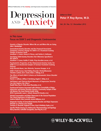SPECIFIC PHOBIA AMONG U.S. ADOLESCENTS: PHENOMENOLOGY AND TYPOLOGY
Conflict of interest: None.
Abstract
Background
Investigators have proposed the diagnostic value of a generalized subtype of specific phobia, with classification based upon the number of phobic fears. However, current and future typologies of specific phobia classify the condition by the nature of phobic fears. This study investigated the clinical relevance of these alternative typologies by: (1) presenting the prevalence and correlates of specific phobia separately by the number and nature of phobia types; and (2) examining the clinical and psychiatric correlates of specific phobia according to these alternative typologies.
Methods
The National Comorbidity Survey Replication-Adolescent Supplement (NCS-A) is a nationally representative face-to-face survey of 10,123 adolescents aged 13–18 years in the continental United States.
Results
Most adolescents with specific phobia met criteria for more than one type of phobia in their lifetime, however rates were fairly similar across DSM-IV/5 subtypes. Sex differences were consistent across DSM-IV/5 subtypes, but varied by the number of phobic types, with a female predominance observed among those with multiple types of phobias. Adolescents with multiple types of phobias exhibited an early age of onset, elevated severity and impairment, and among the highest rates of other psychiatric disorders. However, certain DSM-IV/5 subtypes (i.e. blood-injection-injury and situational) were also uniquely associated with severity and psychiatric comorbidity.
Conclusions
Results indicate that both quantitative and DSM-IV/5 typologies of specific phobia demonstrate diagnostic value. Moreover, in addition to certain DSM-IV/5 subtypes, a generalized subtype based on the number of phobias may also characterize youth who are at greatest risk for future difficulties.




